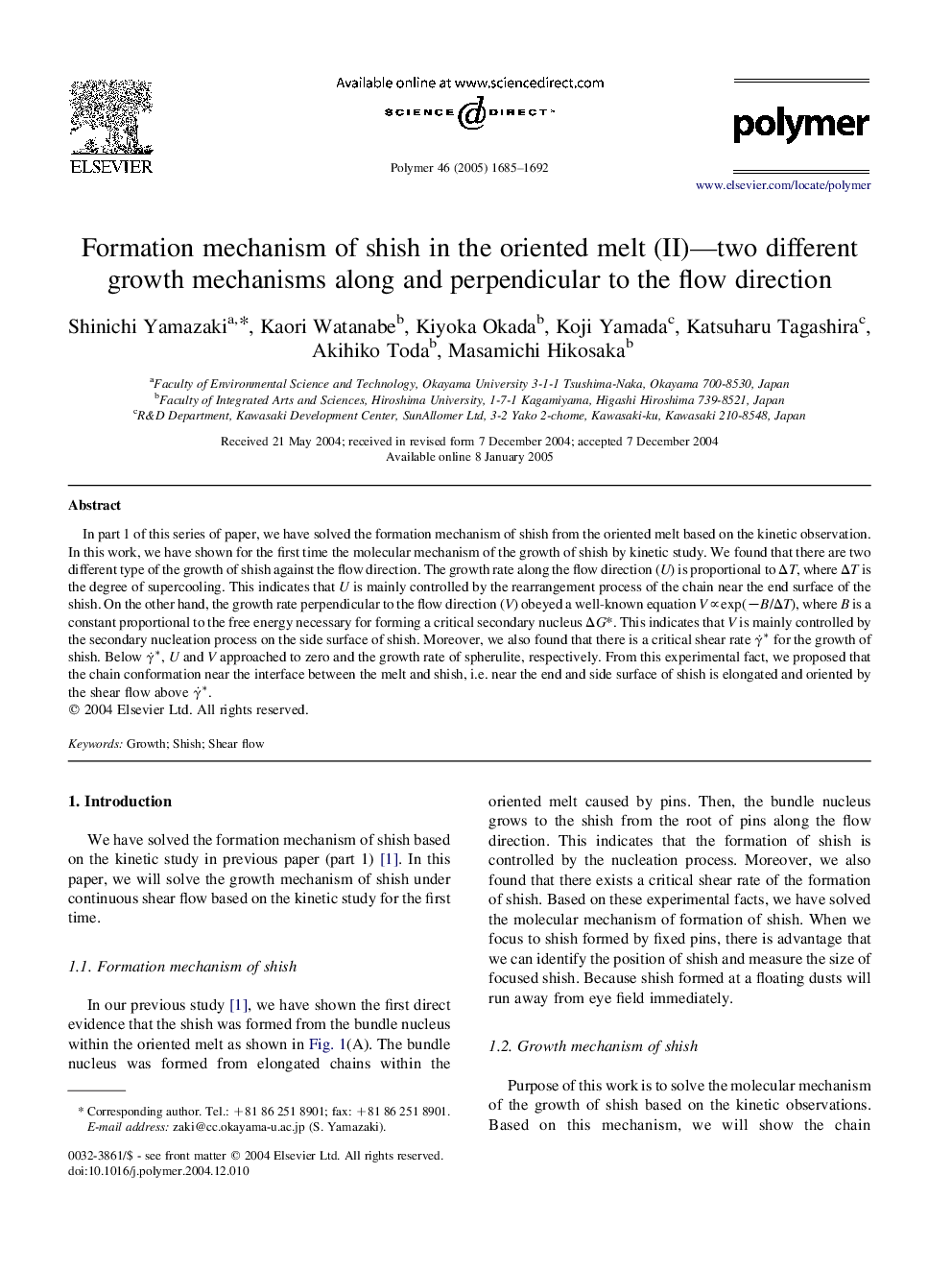| Article ID | Journal | Published Year | Pages | File Type |
|---|---|---|---|---|
| 9559251 | Polymer | 2005 | 8 Pages |
Abstract
In part 1 of this series of paper, we have solved the formation mechanism of shish from the oriented melt based on the kinetic observation. In this work, we have shown for the first time the molecular mechanism of the growth of shish by kinetic study. We found that there are two different type of the growth of shish against the flow direction. The growth rate along the flow direction (U) is proportional to ÎT, where ÎT is the degree of supercooling. This indicates that U is mainly controlled by the rearrangement process of the chain near the end surface of the shish. On the other hand, the growth rate perpendicular to the flow direction (V) obeyed a well-known equation Vâexp(âB/ÎT), where B is a constant proportional to the free energy necessary for forming a critical secondary nucleus ÎG*. This indicates that V is mainly controlled by the secondary nucleation process on the side surface of shish. Moreover, we also found that there is a critical shear rate γË* for the growth of shish. Below γË*, U and V approached to zero and the growth rate of spherulite, respectively. From this experimental fact, we proposed that the chain conformation near the interface between the melt and shish, i.e. near the end and side surface of shish is elongated and oriented by the shear flow above γË*.
Keywords
Related Topics
Physical Sciences and Engineering
Chemistry
Organic Chemistry
Authors
Shinichi Yamazaki, Kaori Watanabe, Kiyoka Okada, Koji Yamada, Katsuharu Tagashira, Akihiko Toda, Masamichi Hikosaka,
